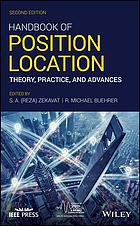

Most ebook files are in PDF format, so you can easily read them using various software such as Foxit Reader or directly on the Google Chrome browser.
Some ebook files are released by publishers in other formats such as .awz, .mobi, .epub, .fb2, etc. You may need to install specific software to read these formats on mobile/PC, such as Calibre.
Please read the tutorial at this link: https://ebookbell.com/faq
We offer FREE conversion to the popular formats you request; however, this may take some time. Therefore, right after payment, please email us, and we will try to provide the service as quickly as possible.
For some exceptional file formats or broken links (if any), please refrain from opening any disputes. Instead, email us first, and we will try to assist within a maximum of 6 hours.
EbookBell Team

4.1
50 reviewsPositioning systems and location technologies have become significant components of modern life, used in a multitude of areas such as law enforcement and security, road safety and navigation, personnel and object tracking, and many more. Position location systems have greatly reduced societal vulnerabilities and enhanced the quality of life for billions of people around the globe ― yet limited resources are available to researchers and students in this important field. The Handbook of Position Location: Theory, Practice, and Advances fills this gap, providing a comprehensive overview of both fundamental and cutting-edge techniques and introducing practical methods of advanced localization and positioning.
Now in its second edition, this handbook offers broad and in-depth coverage of essential topics including Time of Arrival (TOA) and Direction of Arrival (DOA) based positioning, Received Signal Strength (RSS) based positioning, network localization, and others. Topics such as GPS, autonomous vehicle applications, and visible light localization are examined, while major revisions to chapters such as body area network positioning and digital signal processing for GNSS receivers reflect current and emerging advances in the field. This new edition: